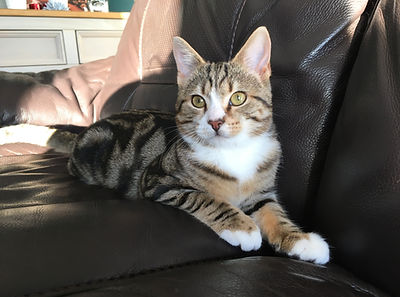How to take a reference photo
I make your Pet Portraits using a reference photo of your choice, however the photo you choose is a reflection on the quality of the portrait.
Heres some top tips for getting the best QUALITY photo!
Distance
Photos must be taken close up and in focus:
CLOSE UP : This is the distance between the subject and the camera/phone taking the picture.
- For larger animals such as dogs be within 1.5 metres from them, smaller dogs and cats within 1 metre.
-Don't take the picture from afar and then crop it down the quality is still not as good as a photo taken close up.
- Take the photo while they are sat still not moving so it isnt blurry.



Taken too far away
Taken close up and sitting still, good quality clear photo!
Taken close up, but too much movement has left it blurry



Close up
Too far away
Natural Light
-
Lighting: Bright natural daylight is the BEST lighting
-
Take your photos OUTSIDE or near a window on a bright CLOUDY day! strong sunlight can cause squinting, and harsh shadows.


-
These images are way to dark! the warm living room lights make Lola look too orange and the patio window is behind her distorting the light.

-
This image is taken outside on a cloudy day

-
This image is taken in the same room but the window/light source is behind ME taking the photo, the natural light is on Lola showing her true fur colour.

You can see the cat is well lit, all important features are visible. nice close up ohoto and unusual composition!

The cat is sitting on the windowsill, on a cloudy day. lovely diffused light casting subtle shadows.

photo taken in the dark, so flash has washed out the colour of fur, made the cat squint. also bad composition as cats body is further forward than its head resulting in a warped perspective.
Composition
-
A good eye for composition is key, take a photo at your pets eye level. looking down on a pet, forces them to look up and will distort how they look in the portrait.



The cat is sitting on the windowsill, on a cloudy day. lovely diffused light casting subtle shadows. picture is close up and cat is looking at the camera at his eye level
the cat is looking up at the camera which can change the shape of his face and not translate well into a drawing
Bad composition, photo taken to high so cat is looking upwards.


-
this photo is at the correct eye level however her back end is further forward than her face, distorting the comopsition.
-
Although it is close up we are looking down onto her face. we need to look at her from her eye level.
-
Cute or silly photos ar'nt great for portraits but provide a bit of insight into your pets character!




-
These photos are perfect for a portrait
-
Taken at eye level
-
Natural lighting
-
close up
-
nice composition, showing Lolas beautiful posing skills!
-
-
Filters are not our friends!! I cannot use photos with filters applied. The photograph must be a true representation of the colour of your pets eyes, fur or feathers

Original Image, clear, up close, original fur colour, most accurate to work from.

Colours are completley wrong and there is loss of detail.

the fade on this filter has reduced the detail in the fur and eyes
